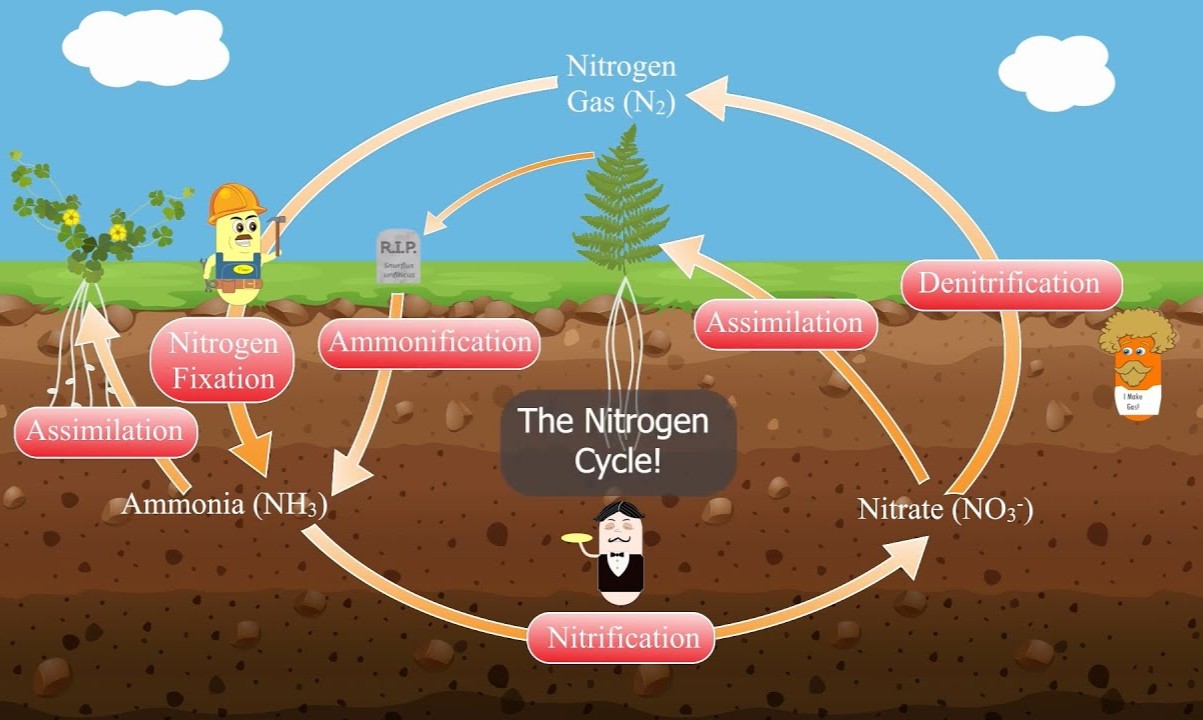
Ammonification is a crucial part of the nitrogen cycle, transforming organic nitrogen into ammonia. But why does this matter? Ammonification helps recycle nutrients, making them available for plants and other organisms. Without it, ecosystems would struggle to thrive. This process involves bacteria and fungi breaking down dead matter and waste, releasing ammonia into the soil. Farmers often rely on this natural process to maintain soil fertility. Understanding ammonification can also help us manage waste more effectively and reduce environmental impact. Ready to dive into the fascinating world of ammonification? Here are 27 facts that will deepen your appreciation for this essential process.
What is Ammonification?
Ammonification is a crucial part of the nitrogen cycle, transforming organic nitrogen into ammonia. This process helps maintain soil fertility and supports plant growth. Let's dive into some fascinating facts about ammonification.
-
Ammonification is a Decomposition Process: When plants and animals die, their bodies decompose. Bacteria and fungi break down proteins and nucleic acids, releasing ammonia.
-
Involves Microorganisms: Specific bacteria and fungi, such as Bacillus and Pseudomonas, play a significant role in ammonification.
-
Part of the Nitrogen Cycle: Ammonification is one step in the nitrogen cycle, which also includes nitrogen fixation, nitrification, and denitrification.
-
Produces Ammonia: The primary product of ammonification is ammonia (NH3), which can be further converted into ammonium (NH4+).
-
Occurs in Soil and Water: Ammonification happens in both terrestrial and aquatic environments, ensuring nitrogen availability for various ecosystems.
-
Essential for Plant Nutrition: Ammonium produced during ammonification can be absorbed by plants, providing them with a vital nutrient.
The Role of Ammonification in Agriculture
Ammonification significantly impacts agriculture by influencing soil health and crop productivity. Here are some key points about its agricultural importance.
-
Enhances Soil Fertility: Ammonification enriches soil with nitrogen, an essential nutrient for plant growth.
-
Supports Crop Yield: Adequate ammonification ensures a steady supply of nitrogen, leading to healthier and more productive crops.
-
Reduces Need for Chemical Fertilizers: Natural ammonification processes can reduce the dependency on synthetic nitrogen fertilizers, promoting sustainable farming practices.
-
Improves Soil Structure: The organic matter breakdown during ammonification contributes to better soil structure and aeration.
-
Promotes Microbial Activity: Ammonification fosters a thriving microbial community in the soil, which is beneficial for overall soil health.
Factors Affecting Ammonification
Several factors influence the rate and efficiency of ammonification. Understanding these can help manage and optimize the process.
-
Temperature: Higher temperatures generally increase the rate of ammonification, as microbial activity is more vigorous.
-
Moisture Levels: Adequate soil moisture is necessary for microbial activity, but excessive water can lead to anaerobic conditions, slowing down ammonification.
-
pH Levels: Soil pH affects microbial activity. Most ammonifying bacteria prefer neutral to slightly alkaline conditions.
-
Organic Matter Availability: The presence of organic matter, such as plant residues and animal waste, provides the necessary substrates for ammonification.
-
Oxygen Availability: While ammonification can occur in both aerobic and anaerobic conditions, aerobic conditions generally favor faster decomposition.
Environmental Impact of Ammonification
Ammonification also has environmental implications, both positive and negative. Here are some important aspects to consider.
-
Contributes to Nitrogen Pollution: Excessive ammonification can lead to nitrogen leaching into water bodies, causing eutrophication and harming aquatic life.
-
Greenhouse Gas Emissions: Ammonia released during ammonification can volatilize into the atmosphere, contributing to greenhouse gas emissions.
-
Soil Acidification: Over time, the accumulation of ammonium in the soil can lead to acidification, affecting soil health and plant growth.
-
Supports Ecosystem Balance: Proper ammonification helps maintain the balance of nitrogen in ecosystems, supporting biodiversity.
Human Influence on Ammonification
Human activities can significantly impact the ammonification process. Here are some ways in which humans influence this natural process.
-
Agricultural Practices: The use of fertilizers, crop rotation, and organic farming practices can enhance or hinder ammonification.
-
Waste Management: Proper disposal and treatment of organic waste can promote efficient ammonification, reducing environmental pollution.
-
Land Use Changes: Deforestation, urbanization, and other land use changes can disrupt natural ammonification processes.
-
Pollution Control: Reducing industrial and agricultural pollutants can help maintain healthy ammonification rates in soil and water.
Interesting Tidbits about Ammonification
Here are some lesser-known facts that highlight the intriguing aspects of ammonification.
-
Ancient Process: Ammonification has been occurring for millions of years, playing a vital role in Earth's nitrogen cycle long before human intervention.
-
Symbiotic Relationships: Some plants, like legumes, form symbiotic relationships with nitrogen-fixing bacteria, indirectly benefiting from ammonification.
-
Bioremediation: Ammonification can be harnessed for bioremediation, using microorganisms to clean up contaminated environments by breaking down organic pollutants.
The Final Word on Ammonification
Ammonification plays a crucial role in the nitrogen cycle, breaking down organic matter into ammonia. This process ensures that nitrogen, an essential nutrient, remains available for plants and other organisms. Without ammonification, ecosystems would struggle to maintain balance, leading to nutrient deficiencies.
Understanding ammonification helps us appreciate the complex interactions within our environment. It highlights the importance of microorganisms in maintaining soil health and fertility. By recognizing these processes, we can make better decisions about agriculture and waste management, promoting sustainable practices.
So next time you think about the soil beneath your feet, remember the tiny organisms working tirelessly to keep our world in balance. Ammonification might not be a household term, but its impact is undeniably significant. Keep learning, stay curious, and appreciate the wonders of nature.
Was this page helpful?
Our commitment to delivering trustworthy and engaging content is at the heart of what we do. Each fact on our site is contributed by real users like you, bringing a wealth of diverse insights and information. To ensure the highest standards of accuracy and reliability, our dedicated editors meticulously review each submission. This process guarantees that the facts we share are not only fascinating but also credible. Trust in our commitment to quality and authenticity as you explore and learn with us.
